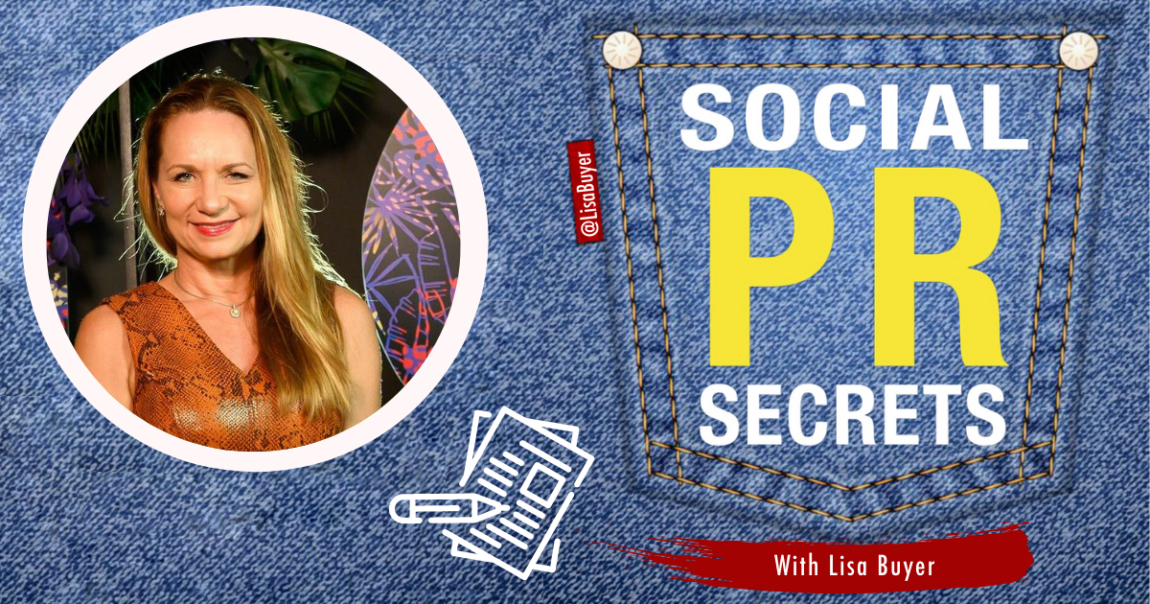What are the important aspects of writing for PR? How can you get reach and exposure for your article? What are PR professionals’ biggest writing pet peeves? If you’re new to the PR world or want to improve your writing, this is the podcast episode for you!
In this episode of the Social PR Secrets Podcast, host Lisa Buyer discusses all things writing! From SEO to headlines, Lisa shares her tips and tricks on how to be a better writer. Lisa is the founder and CEO of The Buyer Group, where she develops Public Relations strategies for her clients. She is also the editor of Social PR Chat, your one-stop-shop to learn everything there is to know about PR. Additionally, Lisa is the author of Social PR Secrets and a professor at the University of Florida.
It’s All About the Headline
How many times have you clicked on an article because the headline intrigued you? Probably multiple times a day. Your headline is what is going to grab your audience’s attention. It should be enticing, not dry. Lisa Buyer recommends you add topical, descriptive, and emotional words to it. Her PR Secret? Use the CoSchedule headline analyzer. Type in your potential headlines and pick the one with the highest score! Another way to write better headlines is to get inspiration from other publications. She suggests NewsWeek, the Wall Street Journal, USA Today, and The New York Times.
Lisa on Writing for SEO
Search Engine Optimization is a big part of social PR. The best way to learn about it is to buy an SEO plug-in. Lisa’s favorite is Yoast SEO Premium. It gives you a readability score and judges how well your article will do in search engines. The website is also full of educational articles to help you understand SEO better. Lisa Buyer explains that when articles show up on google, it is their meta-title and meta-descriptions that actually pop up from the search, not the actual headline. When you think about meta, you need to understand you’re writing for marketing.
Keep Your Audience Engaged
With so many people consuming media on their phones, it’s easy to lose readers. To avoid that, Lisa emphasizes the importance of a good headline. She also advises dividing your article into paragraphs broken up with subheadings. Sentences and paragraphs should be short. Lisa Buyer encourages keeping paragraphs between 150 and 200 words. She also likes using bullets to make everything simpler and clearer. Lastly, try to stick to easy language. If the words or sentence structures are too complicated, you risk losing people.
Lisa’s Biggest Pet Peeves
To make sure your articles are clean and easy to read, try avoiding Lisa’s biggest writing pet peeves:
- Cut the word that. It’s the top filler-killer word and is often used over 20 times in a single article.
- Get rid of filler words like totally and literally.
- Stop using weak adjectives such as very and really.
- Try to write without condescending words. Examples include due to the fact that, in order, perhaps, or actually.
Optimizing Your Article
It’s never too late to improve an article! You can do so is by adding alt tags to images. Alt tags are ways for somebody who might not be able to see a picture to identify it. By assigning relevant keyword phrases to an image, you’re optimizing your article. Another tip is to save your image file name under a keyword. It should be associated with the topic of your article so that your blog post can come up in Google Images
Lisa’s Perfect Anatomy of a Blog Post
After sharing and explaining her main writing tips, Lisa Buyer reveals what the perfect blog post should look like.
- An attention-grabbing headline.
- An opening, a hook. It should be two-three sentences long and include the what, where, when, and why of your post.
- Multiple subheadings breaking up the content of your article.
- A concluding paragraph.
- A call to action.
- Links, both internal and external throughout the blog post. Otherwise, Lisa says, people will move on after reading it.
- Visually-appealing multimedia content. The more, the better.
How to optimize your SEO when writing? What’s a good blog post? What are some tools you can use to help you write? Listen to this episode of Social PR Secrets to find out from a true professional. In only thirty minutes, you will already be a better writer!
“You’re writing for the reader. You’re writing for Google. You’re writing for social media.” – Lisa Buyer
Some topics discussed in this episode include:
- Writing for PR
- SEO
- Coming up with good headlines
- Words to avoid
- Tools to help you write
- Alt tags
- Optimizing your blog posts
- Internal and external sources
- Meta-titles
References and Links Mentioned
- CoSchedule Headline Analyzer https://coschedule.com/headline-analyzer
- Yoast SEO Premium PlugIn https://yoast.com/wordpress/plugins/seo/
- AP Guidelines https://www.apstylebook.com/
- Wordstream https://www.wordstream.com/
- Moz https://moz.com/


